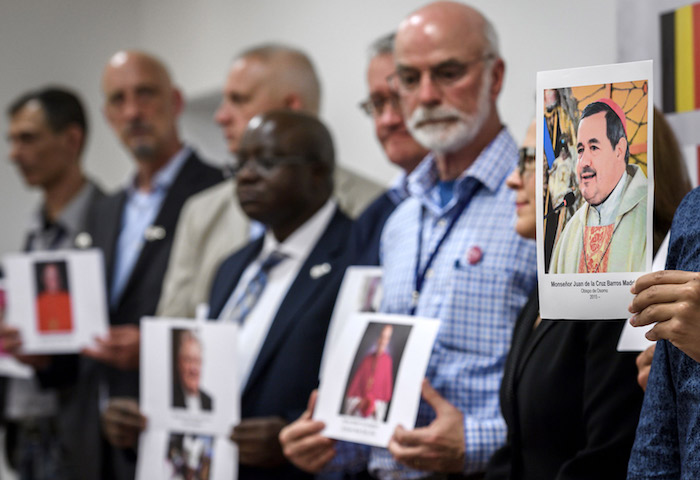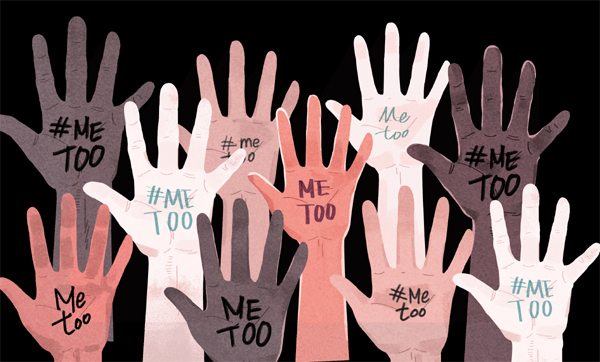
By Garry Wills
The grand jury report of Catholic priests’ predations in Pennsylvania is enough to make one vomit. The terrifying fact that hundreds of priests were preying upon over a thousand victims in that state alone makes one shudder at the thought of how many hundreds and thousands of abusers there are elsewhere in the nation, elsewhere in the world. It is time to stop waiting for more reports to accumulate, hoping that something will finally be done about this. Done by whom? By “the church”? If “the church” is taken to mean the pope and bishops, nothing will come of nothing. They are as a body incapable of making sense of anything sexual.
A wise man once told me that we humans are all at one time or another a little crazy on the subject of sex. A little crazy, yes. But Catholic priests are charged with maintaining The Big Crazy on sex all the time. These functionaries of the church are formally supposed to believe and preach sexual sillinesses, from gross denial to outright absurdity, on the broadest range of issues—masturbation, artificial insemination, contraception, sex before marriage, oral sex, vasectomy, homosexuality, gender choice, abortion, divorce, priestly celibacy, male-only priests—and uphold the church’s “doctrines,” no matter how demented.
Some priests are humane or common-sensible enough to ignore some parts of this impossibly severe set of rules, which gives them reason to be selective about sexual matters. Since scripture says nothing about most of these subjects, popes have claimed a power to define “natural law.” But the nineteenth-century English theologian John Henry Newman was right when he said, “The Pope, who comes of Revelation, has no jurisdiction over Nature.” That would be true even if the natural law being invoked had some philosophical depth, but Catholics are asked to accept childish versions of “natural law.” For instance, since the “natural” use of sex is to beget children, any use apart from that is sinful, and mortally sinful. Masturbate and you go to hell (unless, of course, you confess the sin to a priest, which gives an ordained predator the chance to be “comforting” about masturbation).
Contraception prevents the “natural” begetting? Condoms are a ticket to damnation. Homosexuality gives no “natural” progeny? Straight to hell! This is like saying that the “natural” aim of eating is for maintenance of life, so any eating that is not necessary for bodily preservation is a sin. Toast someone with champagne and you go to hell. “The church” adopted this simpleton’s view of natural law only after it had to abandon an equally childish argument from scripture. Pope Pius XI in his 1930 encyclical Casti Connubii noted that Onan was condemned to death for coitus interruptus with his brother’s widow, when “he spilled it [his seed] on the ground” (Genesis 38: 9-10). Dorothy Parker said she called her parrot Onan because it certainly spilled its seed on the ground. When Bible scholars pointed out that the Genesis passage concerned levirate marriage, later popes had to invent a lame natural law argument to replace the lame scriptural argument.
Priests are set apart, by celibacy, by sacramental powers. They are privileged, and they do not want to give up such influence. When dangers to their status come up, they must mute or minimize the dangers. After all, they do perform good work. Catholic charities are impressive. Priests cannot give people counsel and comfort if their position is compromised. This leads to a long-tacit bargain, a devil’s deal. If you do not challenge the priestly mystique, which bishops mean to use for good purposes, they will not reveal the vile treatment of boys. The priesthood itself is at stake.
And other things are at stake, too. Property, for instance. The first thing bishops have done when charged with abuse is to lawyer up. And lawyers advise their clerical clients not to show sympathy for victims, since that will strengthen their claim. If one has to recognize some responsibility, by all means do it quietly, paying victims but with an agreement that the victim will not talk about the payment. In order to buy this silence, church property must be protected.
To be a priest is to be a company man, the company being the pope and the hierarchy. The farther one rises in the hierarchy, the higher the stakes. Pope Francis probably does want to do something about the priest mystique; but he is surrounded by loyalists of Pope John Paul II and Pope Benedict XVI, and he is trammeled by his predecessors’ many years of priest-mystique maintenance, which is the principal task of many in Rome. Waiting for the pope to do something is to hope that the protector of the mystique will forswear the mystique.
Many victims of abuse by priests have made the mistake of reporting their charges to a bishop. They should have gone straight to a secular authority. To expect from the celibate clergy either candor or good sense on sexual matters is a fool’s game. The Vatican II Council proclaimed that the church is the people of God, not their rulers. The hierarchy, when it opposes the laity, makes itself the enemy of the church, not its embodiment. There are no priests in the Gospels (except Jewish priests at the Temple). Peter and Paul never called themselves or anyone else a priest. Jesus is not called a priest in the New Testament apart from a goofy claim in the late and suspect “Letter to the Hebrews,” in which Jesus is said to be a priest not in any Jewish line, but in that of a non-Jewish, so-called priest named Melchizedek, who can never die.
The laity should reclaim its centrality in the church. It has begun to do that in silent ways: for instance, by widespread disuse of the confessional (a medieval invention), by ignoring the ban on contraception (how otherwise could the birth rate of Catholics have declined so far, so fast?), by the number of Catholic abortions (registered by the Kinsey Institute), and by the drop in church attendance (after the pedophile scandals). Some Catholics, of course, have abandoned the church over one or more of these matters—as can be seen in the decline of the church in Ireland. But people like Bill Donohue of the Catholic League are upset at those who still consider themselves Catholic while ignoring “church teaching” on sexual matters, who go to communion without going to confession, who mock the absurdities called “natural law.”
Those who still want to stand with their Catholic brothers and sisters should not merely dissent in private ways, but should also speak up and demand what opinion polls show they really want for the church as the people of God. It is mandatory celibacy and male-only priesthood that is “unnatural.” Even an admired spiritual leader like Thomas Merton, who thought he could get away from temptation by sealing out “the world” in a monastery, fell madly in love with a young nurse when he had to go to a hospital. It was a love that Kaya Oakes, in a new book of tributes to Merton, thinks made him fully human for the first time.
That story is worth contemplating when we think of all the gay priests studied by the late monk, psychotherapist, and author Richard Sipe who were forced into a dishonesty by the church teaching against homosexuality that condemned them and sometimes made them cover up for other, pedophile priests committing vile acts against children because they had their own little hierarchy-imposed secret. They could resort to dodges like the claim that priests could not be bothered by the married life, with the problems of children, when their whole attention was on spiritual matters. We do not ask whether a surgeon or a pilot or even our family doctor is celibate for fear that, if not so, he will pay us less attention than he ought. In fact, it may be a recommendation for a family doctor that he knows what we all go through.
Rot and dishonesty are hard to claw out, especially when given centuries to embed themselves in the traditions of the church. We can only hope that, this late in the game, they can be cured. There is no way of knowing but to try.
Complete Article ↪HERE↩!



